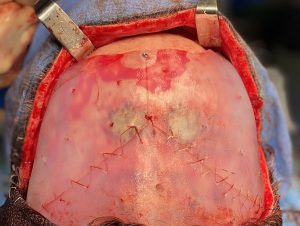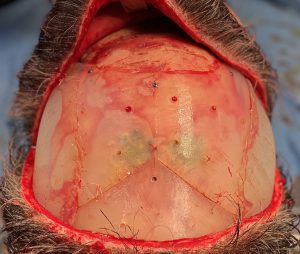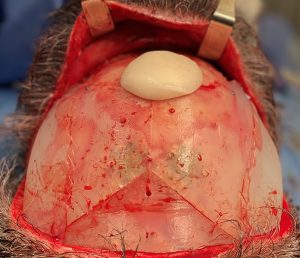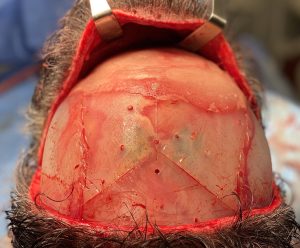Background: Despite the successes achieved with all custom skull implants, the exact aesthetic outcome can never be known with absolute certainty. In addition patients may well have achieved their initial goal, or come very close to it, but desire to get even closer to it or even exceed it if possible. Either waif the issue is further size/dimensional increase it is going to require more augmentative material.
A secondary change in a custom skull implant, particularly for further augmentation (few patients ever ask for it to be smaller), often requires a new custom implant design. But whether that is necessary depends on what the exact amount and location of the additional augmentation that is needed. For a larger overall size increase that covers a large surface area of the implant then a new implant design would be best. But spot augmentations of more limited areas of the implant can be done with an overlay technique.
An overlay approach is applying a non-custom or custom implant on top of an existing custom implant for a specific additional augmentative increase. The interesting question is what the overlay implant would look like and how would it be applied to the existing implant.
Case Study: This male had a prior large two-piece custom skull implant placed through an existing coronal scalp incision for a side and top of the head augmentation. The primary goal was to increase the width of his head from the side of the forehead back along the temporal areas. This was successful but he desired additional side of the head augmentation as well as a forehead augmentation that blended into the existing implant.
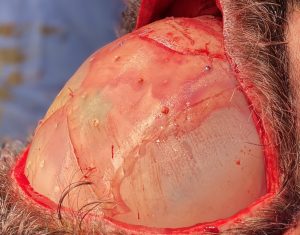
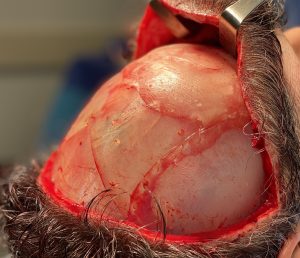
In the right situation overlay implant techniques can be used for secondary augmentation. Key considerations include material choice and methods of application, shaping and fixation. With wide open access as in this case through an existing coronal incision all of these overlay techniques are straightforward to overcome. In more restrictive access through smaller scalp incisions skull implant overlay techniques will be more challenging and less successful.
Case Highlights:
1) Custom skull implants can make for positive head size and shape changes but some patients may seek for further additive changes with secondary surgery.
2) In secondary skull implant surgery for additional dimensional increases the options are to either make a whole new implant or add an overlay onto the exiting implant.
3) If an implant overlay is chosen the decision is then what material and what implant shape should it be and how would it be fixed to it.
Dr. Barry Eppley
Indianapolis, Indiana




